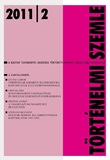Hogyan láttak minket? Magyarságkép a 17. századi és 18. század eleji moldvai és havasalföldi elbeszélõ forrásokban
How Did They See Us? The Picture of the Hungarians in the Moldavian and Wallachian Narrative Sources in the 17th and early 18th Centuries
Author(s): Klára JakóSubject(s): History
Published by: Magyar Tudományos Akadémia Bölcsészettudományi Kutatóközpont Történettudományi Intézet
Summary/Abstract: Historiography has recently paid great attention to the view that different nations had of each other, regarding it as an important pillar of their self-recognition. Within this broad approach a privileged position is occupied by the „portraits” that neighbouring nations formed about each other. The present study, alongside being a „by-product” of a research into the Hungarian correspondence of the voivodes and chief office-holders of Moldavia and Wallachia, fits comfortably into the series of imagological examinations indicated above. It analyses the picture of the Hungarians as reflected in the chronicles written in the Romanian principalities beyond the Carpathians in the course of the 17th and early 18th centuries. The most important conclusion emerging from an examination of these works, which were mostly written with Cyrillic letters in Romanian, among them the writings of Grigore Ureche, Miron Costin, Ion Neculce, Radu Popescu, Stolnicul Constantin Cantacuzino or Dimitrie Cantemir, is that, despite the geographical neighbourhood, with the only exception of the chronicle of Grigore Ureche none of them dealt in detail with either the Hungarians or Hungarian history; nor, in anyway, do they pay more attention to other peoples. This is the result partly of the descriptive, event-orientated nature of contemporary Romanian narrative sources, partly of the fact that most of these works are compilations. Thus, the analysis had to be based on sporadic pieces of information regarding the Hungarians and their history. These prove beyond doubt that for both the Moldavians and the Walachians Hungary and Transylvania were generally synonyms, and that they only dealt with the history and people of these countries in cases when they had an immediate impact upon the history of their own lands. It follows from all this that their picture of the Hungarians is a resultant of common events of the past as well as of judgements about outstanding persons who played a dominant political role. It is only in a very limited number of cases that statements are made about the Hungarians on the basis of personal experience which can be valued from the standpoint of a national characterology. Generalisations are also very rare. As a conclusion it can be stated that not even the inclusion of further contemporary sources into the analysis is likely to modify the picture drawn in the present study.
Journal: Történelmi Szemle
- Issue Year: 2011
- Issue No: 02
- Page Range: 163-182
- Page Count: 20
- Language: Hungarian

